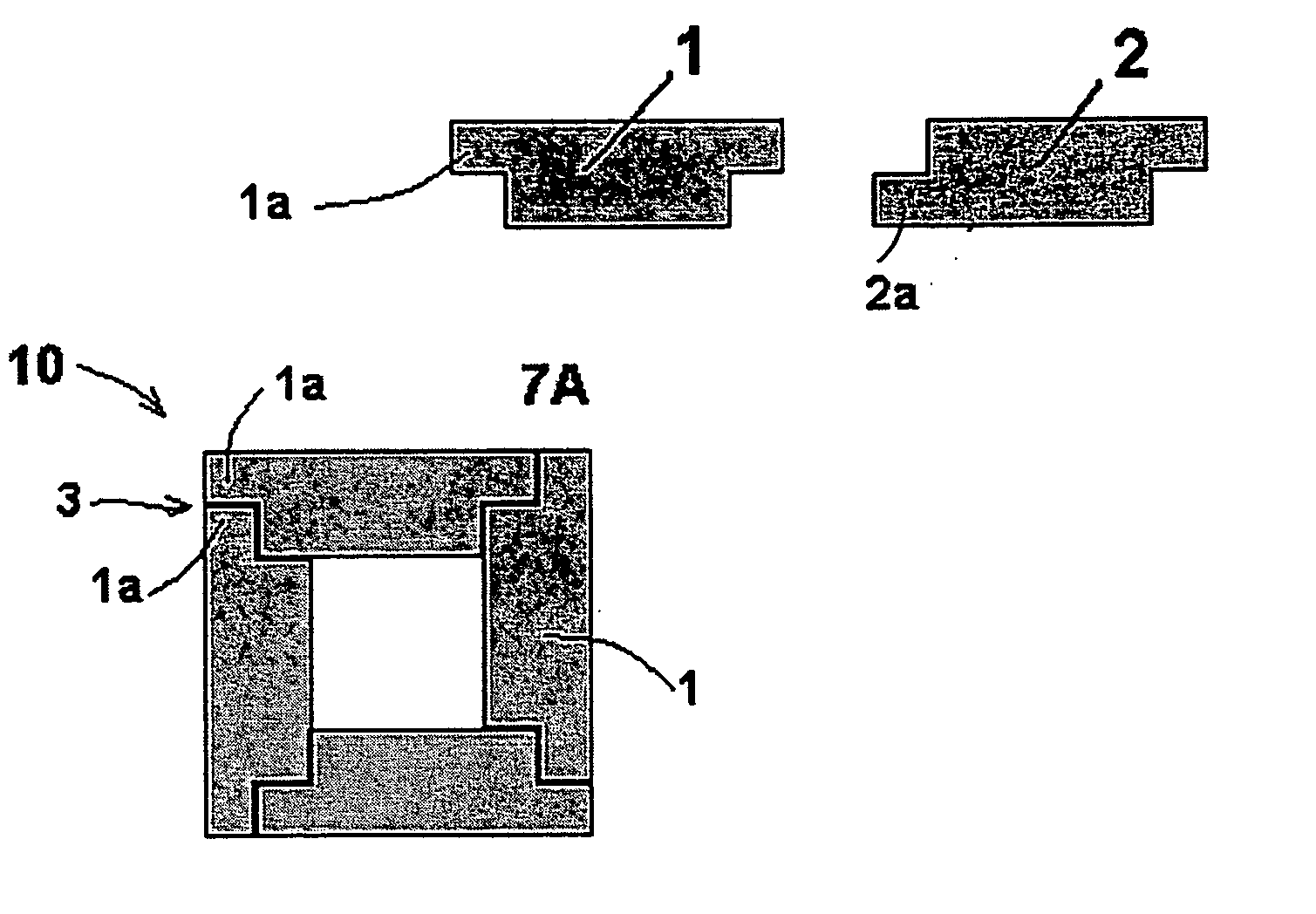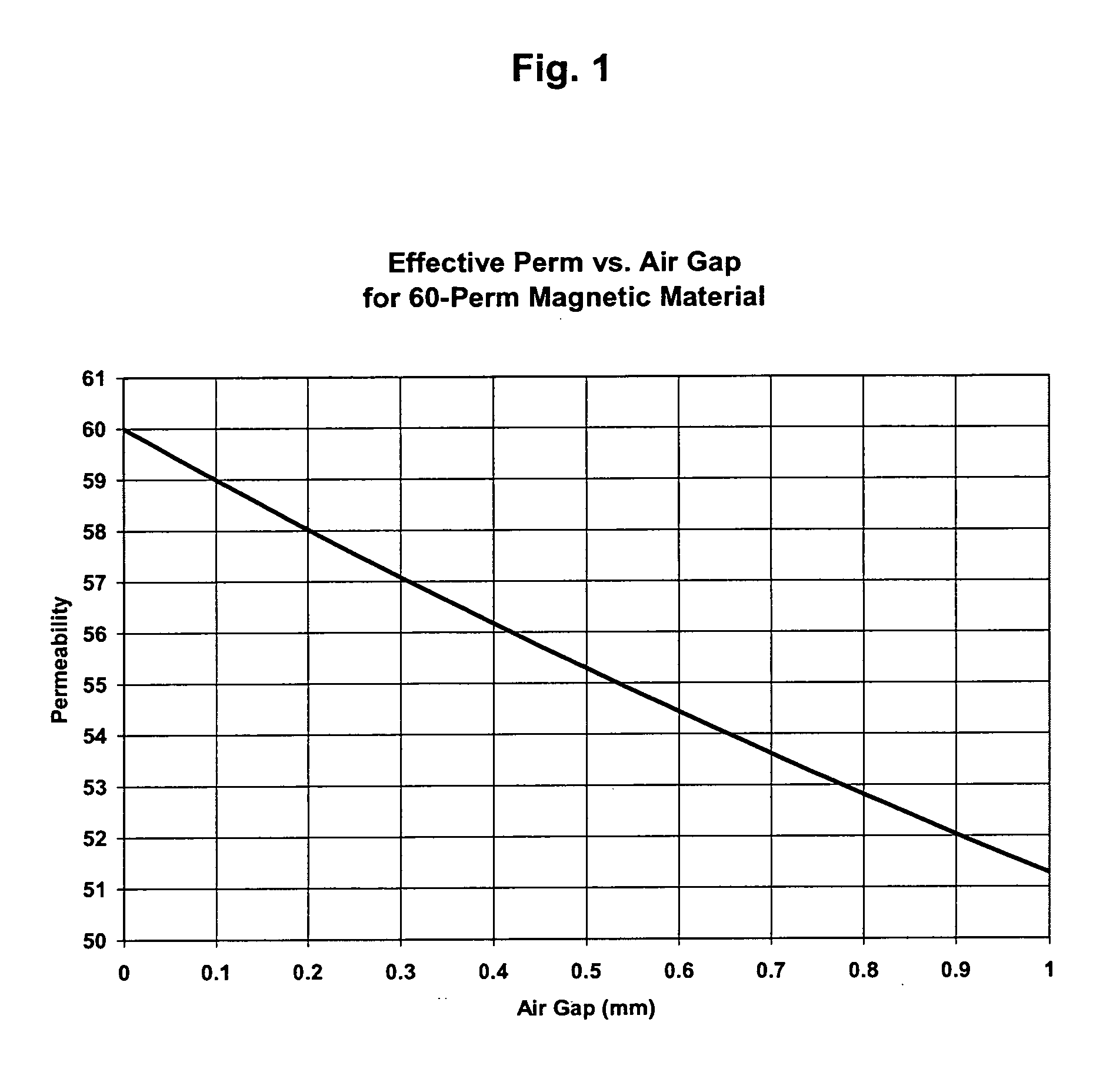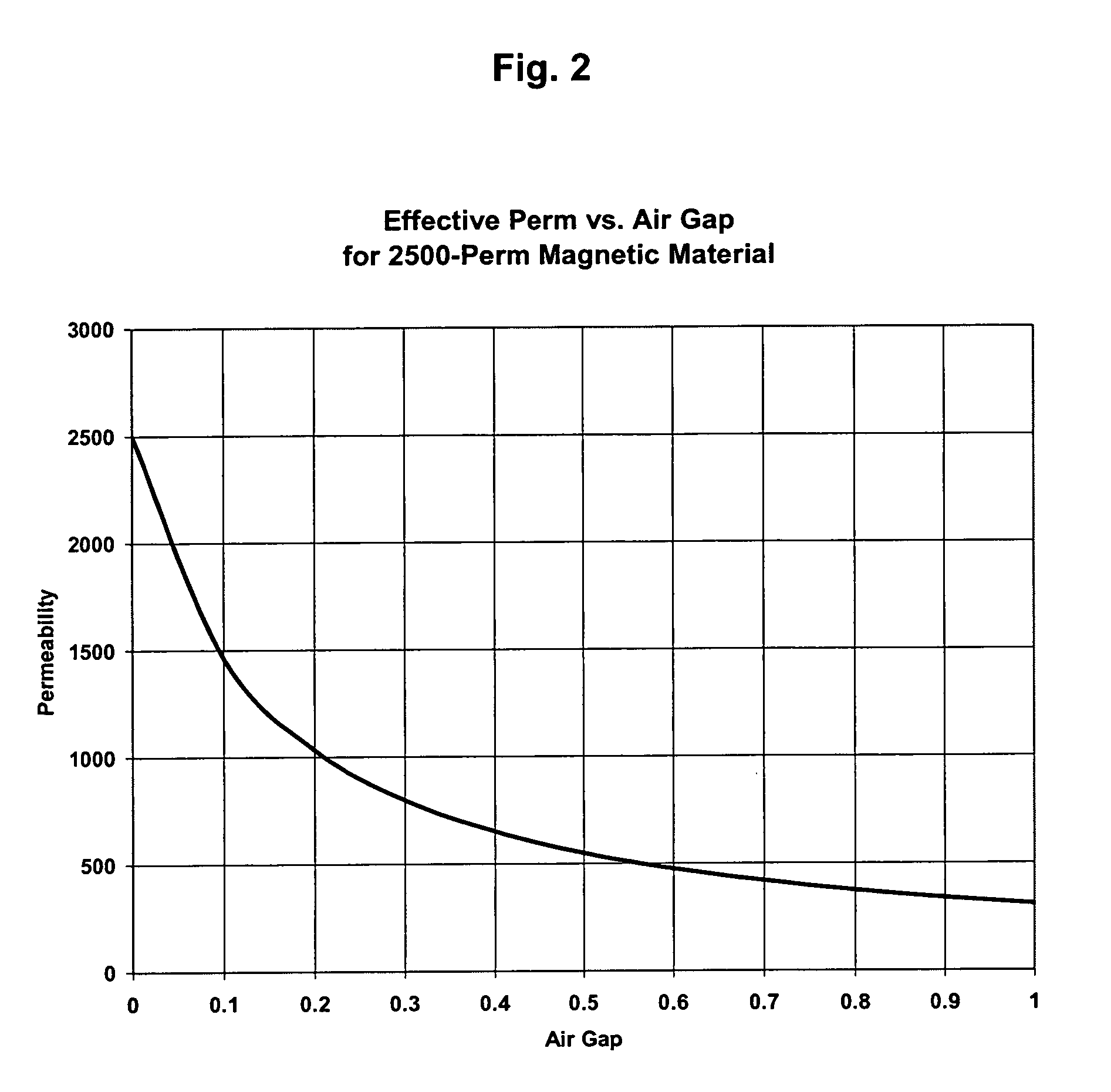Methods of manufacturing and assembling electromagnetic assemblies and core segments that form the same
a technology of electromagnetic assemblies and core segments, which is applied in the manufacture of magnetic bodies, magnetic cores, instruments, etc., can solve the problems of large high-tonnage presses, uneconomical production of sizes over 150 mm diameter and achieves high production cost, high production cost, and high production cos
- Summary
- Abstract
- Description
- Claims
- Application Information
AI Technical Summary
Problems solved by technology
Method used
Image
Examples
example
[0074]FIG. 18 compares a high power inductor design using a segmented core 86 of the invention with a conventional stack of commercially available toroid cores 88. The sample power inductor design compares a soft magnetic core assembled from segments as described herein with that made from a conventional core made from a stack of smaller toroids. The formulas used to calculate the values are well known to those skilled in the art of inductor design and are not shown in the figure. As illustrated in FIG. 18, significant differences in properties, such as the winding area, conductor size, DC copper loss and current density, are shown between the unitary magnetic core assembly of the invention versus the stacked magnetic core in the FIG. 18.
[0075] In the comparison both core assemblies are made from a 26-perm sendust (Fe—Al—Si) alloy. Both cores have essentially identical volumes of magnetic material (136 cm3, 138 cm3) and, therefore, the same energy storage capability when used as an...
PUM
| Property | Measurement | Unit |
|---|---|---|
| diameter | aaaaa | aaaaa |
| length | aaaaa | aaaaa |
| length | aaaaa | aaaaa |
Abstract
Description
Claims
Application Information
 Login to View More
Login to View More - R&D
- Intellectual Property
- Life Sciences
- Materials
- Tech Scout
- Unparalleled Data Quality
- Higher Quality Content
- 60% Fewer Hallucinations
Browse by: Latest US Patents, China's latest patents, Technical Efficacy Thesaurus, Application Domain, Technology Topic, Popular Technical Reports.
© 2025 PatSnap. All rights reserved.Legal|Privacy policy|Modern Slavery Act Transparency Statement|Sitemap|About US| Contact US: help@patsnap.com



